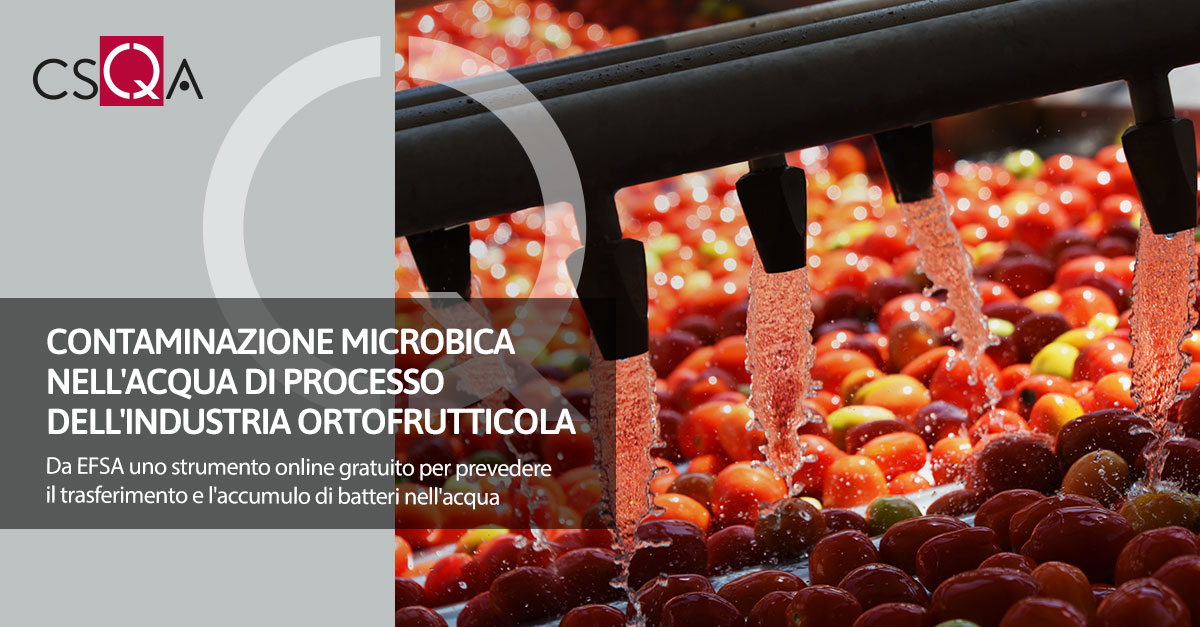 Based on the findings from an analysis of produce industry process water management, the European Food Safety Authority (EFSA) has developed a free, online tool to help predict the transfer and accumulation of bacteria in process water in post-harvest handling and processing operations for produce. EFSA has also published findings and recommendations for fresh-whole, fresh-cut, and frozen produce.
Based on the findings from an analysis of produce industry process water management, the European Food Safety Authority (EFSA) has developed a free, online tool to help predict the transfer and accumulation of bacteria in process water in post-harvest handling and processing operations for produce. EFSA has also published findings and recommendations for fresh-whole, fresh-cut, and frozen produce.
WaterManage4You: A New Tool for Managing Process Water
The new app, WaterMagage4You, works with preset or customized data, using a unique mathematical model to simulate various scenarios and predict the impact of different strategies for water disinfection and replenishment. The app considers parameters such as volume and replenishment of water, chlorine disinfectant concentration, total volume of the product being washed, and total bacteria counts. WaterManage4You can be accessed here. It is most relevant for food business operators, scientists, and food regulatory authorities.The mathematical model used by WaterManage4You is described in a recently published EFSA scientific opinion.
Recommendations for Process Water Management
In its analysis that led to the development of WaterManage4You, EFSA followed the concept of “fit-for-purpose water” developed by the Food and Agriculture Organization of the United Nations (FAO) and the World Health Organization (WHO), which calls for the consideration of different factors—such as the assessment of the water source and its potential hazards, disinfection options, and the end use of the food product (e.g., if it is to be eaten raw)—when deciding on the best water management plan.The analysis led to the publication of three scientific opinions that provide recommendations for fresh-whole fruit, vegetables, and herbs (read the scientific opinion here); fresh-cut fruit, vegetables, and herbs (read the scientific opinion here); and frozen fruit, vegetables, and herbs (read the scientific opinion here).
Relevant Hazards
Across the three sectors, EFSA identified certain microbes as the most important microbiological hazards, especially in cases where water is repeatedly reused or insufficiently disinfected:- In the fresh-whole produce sector, the most relevant microorganisms identified as hazards in process water included L. monocytogenes and norovirus. L. monocytogenes was frequently detected in scenarios where large product volumes were processed over extended operational cycles. Salmonella was confirmed in one water sample used for dumping apples, but neither Shiga toxin-producing E. coli (STEC) nor E. coli O157:H7 were detected in any sample.
- In the fresh-cut produce sector, the most relevant microorganisms identified as hazards in process water included Salmonella and STEC. However, L. monocytogenes and E. coli O157:H7 were not detected.
- In the frozen produce sector, the most relevant microorganisms identified as hazards in process water included Salmonella and L. monocytogenes. However, there was only one positive finding of STEC.
Specific to the fresh-cut produce sector, an additional hazardous event included nutrient-rich water due to the release of nutrients from cut fruits, vegetables, and herbs. Specific to the frozen produce sector, the use of contaminated water sources and the improper cooling of process water after blanching were identified as additional hazardous events.
Mitigating Microbial Contamination
Key preventive measures to minimize microbiological contamination in process water during post-harvest handling and processing, based on Good Hygiene Practices (GHPs) and Good Manufacturing Practices (GMPs), include:- Proper infrastructure and fit-for-purpose buildings and equipment
- Cleaning and disinfection of equipment and the environment
- Technical maintenance and calibration
- Water and air quality control
- Personnel management
- Working methodology.
Process Water Intervention Controls
Regarding intervention measures, chemical disinfectants are commonly used, such as chlorine-based treatments, peroxyacetic acid (PAA), and hydrogen peroxide. An effective disinfectant application to the water requires real-time monitoring of different parameters such as residual disinfectant levels, pH, and other physico-chemical parameters. No common water replenishment practices were observed in any industrial scenario across the sectors; instead, smaller-volume refilling strategies were used to sustain constant water levels.Specific intervention strategies differed across the three observed sectors:
- In the fresh-whole produce sector, intervention strategies were based on water disinfection treatments using chlorine-based disinfectants, followed by PAA and hydrogen peroxide.
- In the fresh-cut produce sector, intervention strategies were based on water disinfection treatments using chlorine-based disinfectants, followed by PAA and electrolyzed water.
- In the frozen produce sector, intervention strategies were based on water disinfection treatments using PAA and hydrogen peroxide. Chlorine-based disinfectants were not used by any of the industrial cases. In this sector, one-third of the industrial scenarios (four out of 13) did not apply any intervention strategy aiming to maintain the fit-for-purpose microbiological quality of the process water.